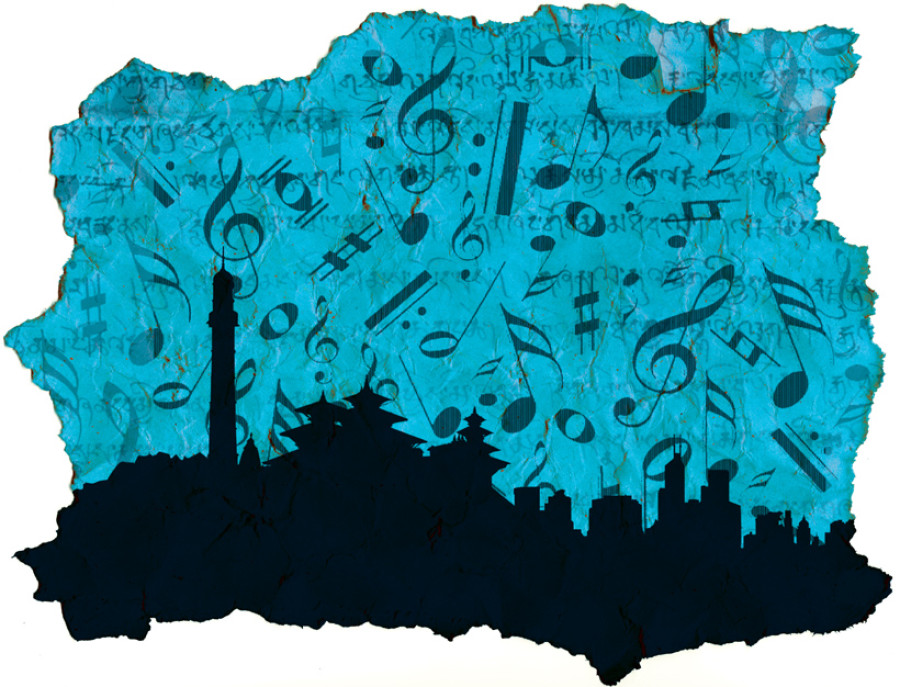Opinion
Facing extinction
Private and other guthis have vanished due to the financial burden of keeping them active
Meera Rajbhandari Amatya
The Tarani Bahal Guthi, a cultural society from Makhan Tol which once had a membership of 64 families, now only has five members. Rabindra Lal Shrestha, a former member of Parliament and a member of the guthi, said that when he was a small boy, he had heard from his grandfather and great-grandfather that it owned 84 ropanis of land, the rent from which was used to finance its operation. There was a time when the guthi used to celebrate for a whole week by worshiping the deities and holding a feast. With the passage of time, some of the land owned by the guthi has been stolen, and some lost due to lack of proper documentation. The ownership of some of the land is being legally disputed. As a result, the guthi, which belongs to an affluent Shrestha Newar community of Makhan Tol in Kathmandu, is in a precarious state.
The state of Trishul Festival of Pashupati Gol (Deopatan) which is also known as Machatiya Jatra is no different. The festival has not been held for the past 23 years because the guthi in charge of organising it has no money.
In deep crisis
The Tarani Guthi and Trishul Festival Guthi are two examples of extinct guthis. In Nepal, guthis including Raj Guthis (guthis operated by the government Guthi Corporation), private and other guthis have vanished due to the financial burden of keeping them active, and many guthis are on the verge of extinction. In the past, the rulers and affluent donors had set aside resources including adequate land to generate income to finance religious activities, tradition, culture and social practices. “The sustainability of these social organisations, which are a unique custom in the world, has been continuously weakened with time,” said Professor Subarna Shakya, a cultural expert.
The history of guthis in Nepal dates from the early fifth century. The Lichchhavi king Mandev initiated the guthi system by donating his private property. The guthi is based on the religion and rituals of Newars. Guthis like Sajha Guthi, See Guthi, Sana Guthi, Jatra Guthi, Pooja Guthi, Baja Guthi, Nach Guthi and others have been functioning in the Newar community for many centuries.
After the enforcement of Land Reform in 1964, the guthis, which have been basically established for social harmony, mutual cooperation and collaboration, were regulated under Guthi Sansthan Act. Subsequently, an amendment to the act made it possible to change the legal status of land belonging to guthis, thereby allowing these assets to be sold. As a result, many guthis lost their lands to sales. Likewise, when land-swapping regulations were enacted, the land mafia engaged in swapping fertile guthi land with unproductive land in collusion with Guthi Sansthan, making guthis financially insecure as their revenues declined.
“The government’s land-swapping policy has been a major cause for guthis falling into a trap”, said Deepak Pandey, deputy administrator of Guthi Sansthan. Guthi lands are sold and the money is kept in a trust fund. Though there is a provision for ploughing back 25 percent of the interest earned into the fund, timely and appropriate arrangements for financing guthis have not been made due to an economic downturn and falling bank interest rates, according to Pandey.
Legal protection
Since there is no tradition of keeping records of the number of private guthis and their assets; Guthi Sansthan does not have any data about them. According to a source at Guthi Sansthan, there are guthi lands in 68 districts—561,990 ropanis in the hills and 66,330 bighas in the Tarai. Kathmandu has the highest number of Raj Guthis within the Valley. Kathmandu also leads in the number of annual festivals with 1,200 events while there are 309 in Bhaktapur and 422 in Lalitpur. In terms of the number of temples and shrines, there are 717 temples, 647 roadside shelters and 159 ponds.
Clearly, there is a pertinent need to maintain land belonging to guthis as they are not only the property of the Newar community but the property of the whole country. For, festivals, social practices and cultural traditions not only identify a nation but also contribute to the national economy and the tourism industry. To provide continuity to the culture, religion and tradition of the Newar community, Articles 32 and 51 of the new constitution, besides the national policy and directive principles related to social justice and inclusion, provides for the conservation and promotion of the culture and tradition of the indigenous nationalities. Similarly, the International Labour Organisation’s Convention 169 provides for the protection by the state of the social, cultural, religious and spiritual values and beliefs, laws and customs of the indigenous nationalities.
Back to the Newars
Following a public outcry over a cut in funding for the Kumari Festival, a high-level study committee had been established by the Ministry of Federal Affairs, Parliament Management and Culture to study the Guthi System of the Newar community under the convenorship of Pabitra Bajracharya, the then secretary general of Newa Dey Daboo. The committee’s report stated that the involvement of Guthi Sansthan in preserving the guthis was unjustifiable, and that the guthi lands and other assets which had been provided for preserving the culture of the Newars should be returned to the Newar community.
Due to a conspiracy between the bureaucracy and the land mafia which has never understood Newar culture and tradition, the sustainable institution of the guthi, which ensures the continuity of Newar religion, tradition and culture, is gradually vanishing. To quote Bajracharya, “The state needs to formulate a concrete policy in line with the present constitution and the International Labour Organisation’s Convention 169 to preserve Newar culture.”
Amatya is president of the Federation of Nepalese Indigenous Journalists Kathmandu District Committee




 8.12°C Kathmandu
8.12°C Kathmandu










